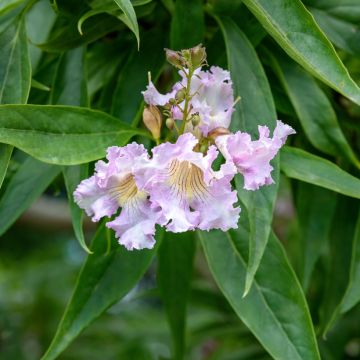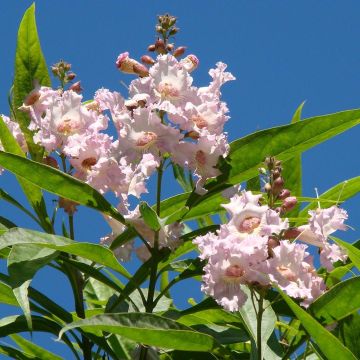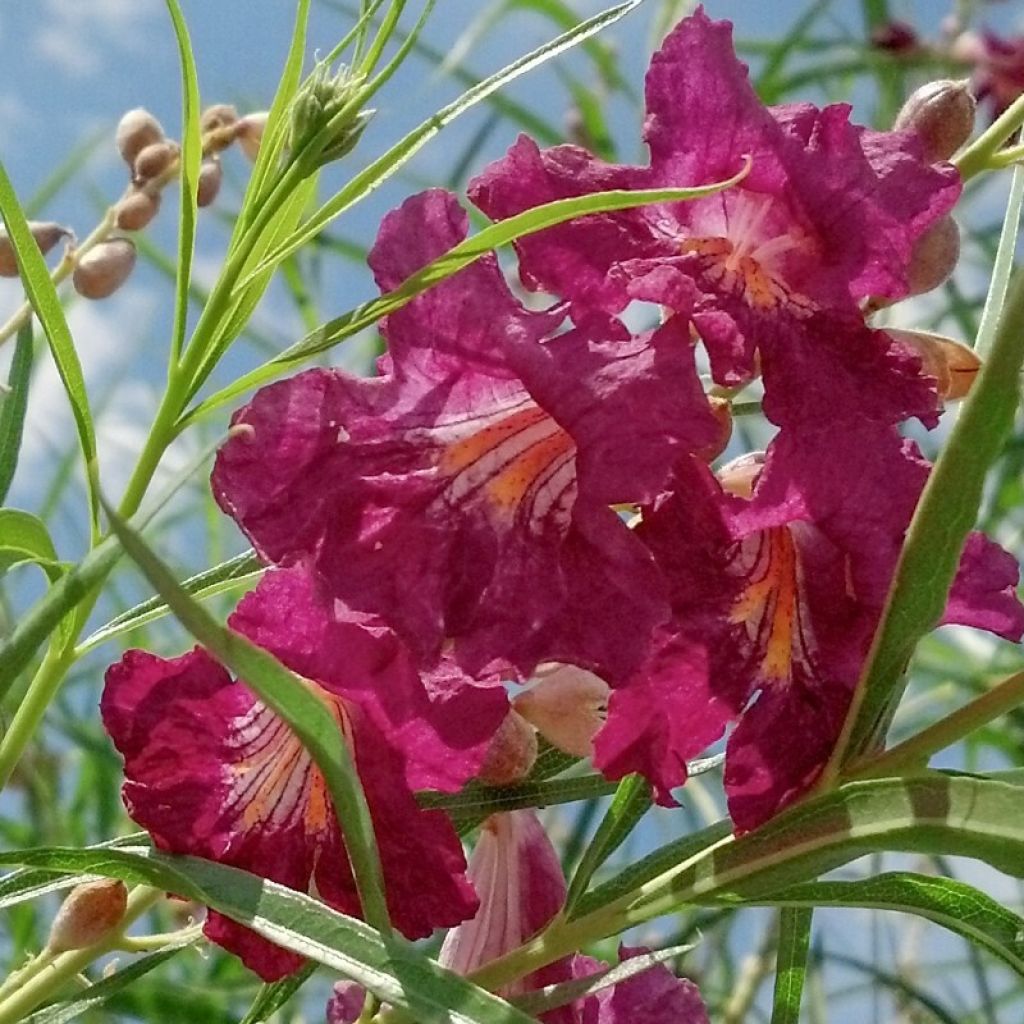

Chilopsis linearis Burgundy
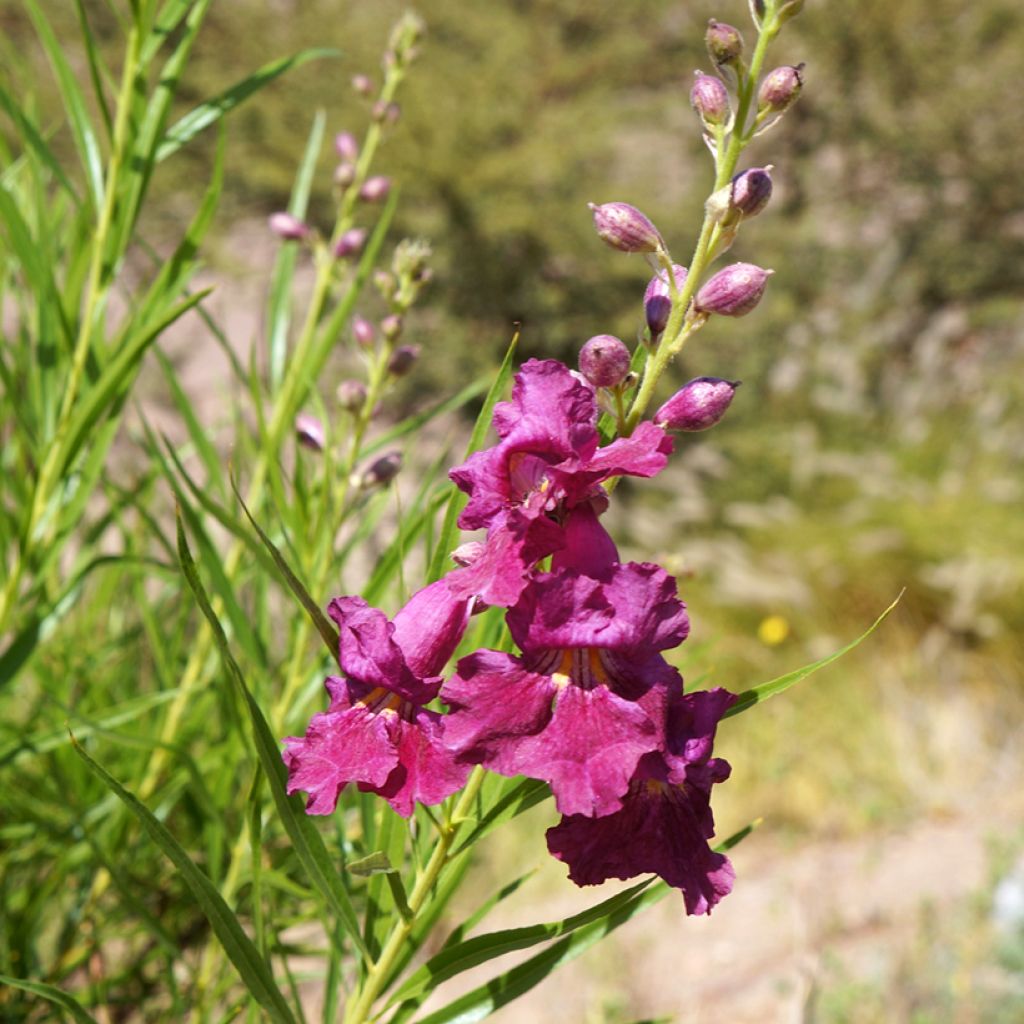

Chilopsis linearis Burgundy
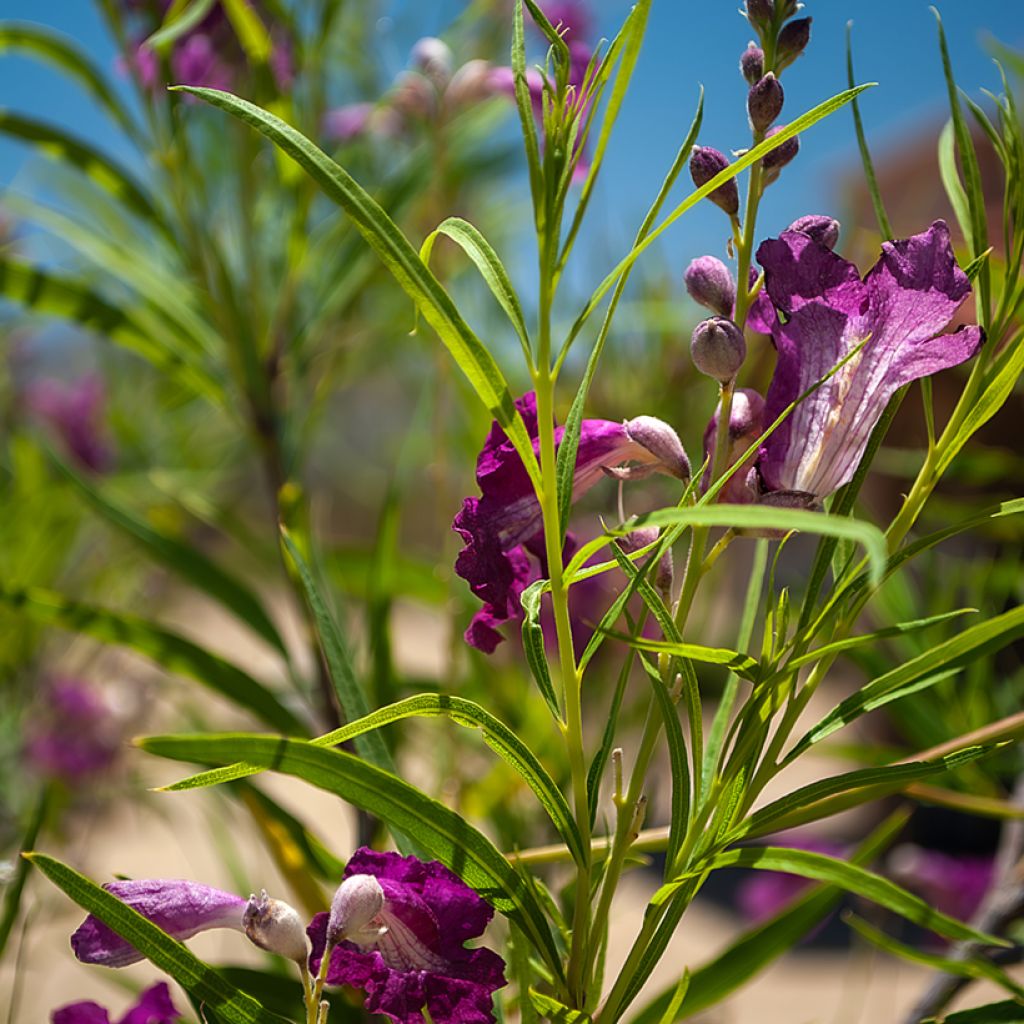

Chilopsis linearis Burgundy
Chilopsis linearis Burgundy
Chilopsis linearis Burgundy
Desert Willow, Desert Catalpa
Not cheap, but the young plant is of good size. Looking forward to the flowering!
Thomas, 23/03/2023
Special offer!
Receive a €20 voucher for any order over €90 (excluding delivery costs, credit notes, and plastic-free options)!
1- Add your favorite plants to your cart.
2- Once you have reached €90, confirm your order (you can even choose the delivery date!).
3- As soon as your order is shipped, you will receive an email containing your voucher code, valid for 3 months (90 days).
Your voucher is unique and can only be used once, for any order with a minimum value of €20, excluding delivery costs.
Can be combined with other current offers, non-divisible and non-refundable.
Why not try an alternative variety in stock?
View all →This plant carries a 24 months recovery warranty
More information
We guarantee the quality of our plants for a full growing cycle, and will replace at our expense any plant that fails to recover under normal climatic and planting conditions.
Would this plant suit my garden?
Set up your Plantfit profile →
Description
Chilopsis linearis 'Burgundy' is a variety of Chilopsis linearis, also known as desert willow, highly appreciated for its abundant flowering in purple that spreads from May to September, or even October in the hottest regions. Very abundant between May and June, this flowering will be more sparse afterwards, but still present. Its campanulate flowers, trumpet-shaped, resemble those of the trumpet vine and bloom in the middle of deciduous foliage, dark green and delicate like that of the willow. Particularly attractive to pollinators and delicately scented, the flowers of the desert willow attract many pollinators, especially the carpenter bee, recognizable by its black colour.
The second advantage of this Chilopsis linearis is its great resistance to summer drought, making it an ideal shrub for Mediterranean gardens or those affected by climate change. Its low maintenance (except for some watering in the first two years) and its need for poor, rocky, and well-drained soil make it an easy ornamental tree to install on a slope, as a hedge or border, or in a pot on a terrace.
Native to arid areas of the southwestern United States and Mexico, Chilopsis linearis 'Burgundy' grows in dry riverbeds and ravines. Called the desert willow, it is not actually a willow, but belongs to the Bignoniaceae family, like the trumpet vine and Catalpa. However, its slightly trailing habit and especially its foliage resemble the willow. As for its bean-shaped fruits, they are characteristic of the Catalpa. As a xerophyte plant, Chilopsis linearis particularly appreciates very poor, dry, sandy, and rocky soils, but very well-drained. Humidity and excess water would be fatal to it. However, it is rather hardy and can tolerate temperatures as low as -15°C. It also tolerates limestone and salty soils and is not afraid of salt spray. Due to its desert origins and its adapted root system, Chilopsis linearis draws nutrients from deep in the soil. That is why it is not recommended to plant it near pipes or along a facade. The desert willow also needs a sunny exposure.
Chilopsis linearis 'Burgundy' can reach a height of 4 to 5 metres (13 feet 1 inches to 16 feet 5 inches) and a similar spread if left unpruned. It is multi-stemmed with relatively low branching. It can therefore become a small tree with an irregular habit. It grows slowly in the years following its planting, but faster afterwards. As for the resumption of vegetation, it is relatively late. Due to its great resistance to drought, Chilopsis linearis 'Burgundy' is ideal in the Mediterranean regions. But its hardiness also allows it to grow elsewhere. And if the above-ground parts of the desert willow are damaged by frost, it will sprout again in spring without difficulty. Its preference for heat allows it to grow in sunny slopes, dry beds, or rockeries. It will have a beautiful effect alongside the red Yucca (Hesperaloe parviflora), Dasylirions, Cordylines, or Agaves. It can also be planted as a standalone tree to shade a terrace, in the company of a mastic tree (Pistacia lenticus), a Ceanothus, or a Leptospermum, or in a windbreak hedge. It can also be grown in a pot.
In regions with cold winter climates, Chilopsis linearis 'Burgundy' is planted between March and May, and in regions with hot and dry summers, it is planted from September to November. The soil must be very well-drained, especially in winter, deep but poor in organic matter. A south-southwest exposure suits it perfectly, allowing it to benefit from the sun's rays. In the two years following planting, watering should be regular, once a week. The same applies if the desert willow is grown in a pot. Once it is well rooted, watering is unnecessary. To give it a nice shape and remove dead branches, Chilopsis linearis can be pruned. This pruning should be done at the end of winter, between February and March, just before the resumption of vegetation. It will also promote a beautiful flowering.
Report an error about the product description
Chilopsis linearis Burgundy in pictures
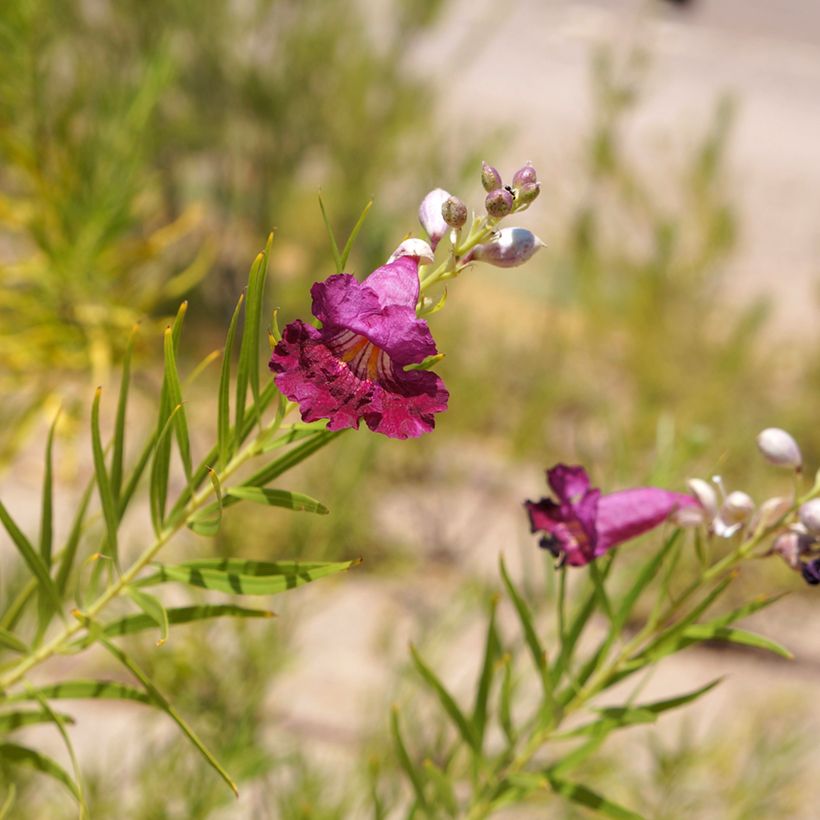

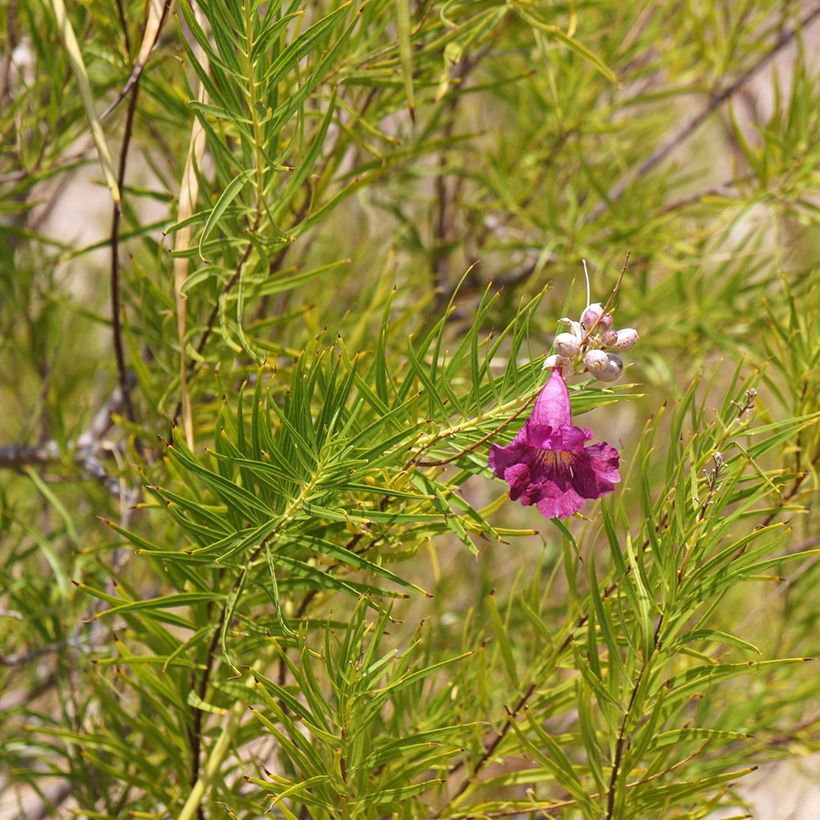

Plant habit
Flowering
Foliage
Botanical data
Chilopsis
linearis
Burgundy
Bignognaceae
Desert Willow, Desert Catalpa
North America
Other Chitalpa and Chilopsis
View all →Planting and care
Chilopsis linearis is planted from March to May (in rather cold regions in winter) or from September to November in hot and dry regions in summer. From its origins, it has retained a clear preference for long and hot summers. It requires a very well-drained, loose, deep, sandy or gravelly soil, low in organic matter, which does not remain too wet in winter, which can harm its hardiness. The presence of limestone is well tolerated. The substrate should be kept moist during the first summer or the first two summers, then this small tree completely eliminates the need for watering, even in hot and very dry climates. It will be planted in full sun and away from competition with other trees. Pruning will be carried out if necessary (for training as a standard or tree) in late winter. To obtain a very bushy subject, it is perfectly possible to prune short in late winter, without harming flowering. The vegetation of this bush restarts late, in May, depending on the region. The desert willow is a bush that does not appreciate organic fertilizers.
A bush grown in a large pot will require regular watering in summer.
Planting period
Intended location
Care
Planting & care advice
-
, onOrder confirmed
Reply from on Promesse de fleurs
Haven't found what you were looking for?
Hardiness is the lowest winter temperature a plant can endure without suffering serious damage or even dying. However, hardiness is affected by location (a sheltered area, such as a patio), protection (winter cover) and soil type (hardiness is improved by well-drained soil).

Photo Sharing Terms & Conditions
In order to encourage gardeners to interact and share their experiences, Promesse de fleurs offers various media enabling content to be uploaded onto its Site - in particular via the ‘Photo sharing’ module.
The User agrees to refrain from:
- Posting any content that is illegal, prejudicial, insulting, racist, inciteful to hatred, revisionist, contrary to public decency, that infringes on privacy or on the privacy rights of third parties, in particular the publicity rights of persons and goods, intellectual property rights, or the right to privacy.
- Submitting content on behalf of a third party;
- Impersonate the identity of a third party and/or publish any personal information about a third party;
In general, the User undertakes to refrain from any unethical behaviour.
All Content (in particular text, comments, files, images, photos, videos, creative works, etc.), which may be subject to property or intellectual property rights, image or other private rights, shall remain the property of the User, subject to the limited rights granted by the terms of the licence granted by Promesse de fleurs as stated below. Users are at liberty to publish or not to publish such Content on the Site, notably via the ‘Photo Sharing’ facility, and accept that this Content shall be made public and freely accessible, notably on the Internet.
Users further acknowledge, undertake to have ,and guarantee that they hold all necessary rights and permissions to publish such material on the Site, in particular with regard to the legislation in force pertaining to any privacy, property, intellectual property, image, or contractual rights, or rights of any other nature. By publishing such Content on the Site, Users acknowledge accepting full liability as publishers of the Content within the meaning of the law, and grant Promesse de fleurs, free of charge, an inclusive, worldwide licence for the said Content for the entire duration of its publication, including all reproduction, representation, up/downloading, displaying, performing, transmission, and storage rights.
Users also grant permission for their name to be linked to the Content and accept that this link may not always be made available.
By engaging in posting material, Users consent to their Content becoming automatically accessible on the Internet, in particular on other sites and/or blogs and/or web pages of the Promesse de fleurs site, including in particular social pages and the Promesse de fleurs catalogue.
Users may secure the removal of entrusted content free of charge by issuing a simple request via our contact form.
The flowering period indicated on our website applies to countries and regions located in USDA zone 8 (France, the United Kingdom, Ireland, the Netherlands, etc.)
It will vary according to where you live:
- In zones 9 to 10 (Italy, Spain, Greece, etc.), flowering will occur about 2 to 4 weeks earlier.
- In zones 6 to 7 (Germany, Poland, Slovenia, and lower mountainous regions), flowering will be delayed by 2 to 3 weeks.
- In zone 5 (Central Europe, Scandinavia), blooming will be delayed by 3 to 5 weeks.
In temperate climates, pruning of spring-flowering shrubs (forsythia, spireas, etc.) should be done just after flowering.
Pruning of summer-flowering shrubs (Indian Lilac, Perovskia, etc.) can be done in winter or spring.
In cold regions as well as with frost-sensitive plants, avoid pruning too early when severe frosts may still occur.
The planting period indicated on our website applies to countries and regions located in USDA zone 8 (France, United Kingdom, Ireland, Netherlands).
It will vary according to where you live:
- In Mediterranean zones (Marseille, Madrid, Milan, etc.), autumn and winter are the best planting periods.
- In continental zones (Strasbourg, Munich, Vienna, etc.), delay planting by 2 to 3 weeks in spring and bring it forward by 2 to 4 weeks in autumn.
- In mountainous regions (the Alps, Pyrenees, Carpathians, etc.), it is best to plant in late spring (May-June) or late summer (August-September).
The harvesting period indicated on our website applies to countries and regions in USDA zone 8 (France, England, Ireland, the Netherlands).
In colder areas (Scandinavia, Poland, Austria...) fruit and vegetable harvests are likely to be delayed by 3-4 weeks.
In warmer areas (Italy, Spain, Greece, etc.), harvesting will probably take place earlier, depending on weather conditions.
The sowing periods indicated on our website apply to countries and regions within USDA Zone 8 (France, UK, Ireland, Netherlands).
In colder areas (Scandinavia, Poland, Austria...), delay any outdoor sowing by 3-4 weeks, or sow under glass.
In warmer climes (Italy, Spain, Greece, etc.), bring outdoor sowing forward by a few weeks.






























